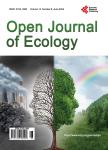Application of Planarian Brain Regeneration: Detection of Water Pollution
Application of Planarian Brain Regeneration: Detection of Water Pollution作者机构:College of Life Science Xinxiang Medical University Xinxiang China
出 版 物:《Open Journal of Ecology》 (生态学期刊(英文))
年 卷 期:2023年第13卷第2期
页 面:95-105页
学科分类:08[工学] 0812[工学-计算机科学与技术(可授工学、理学学位)]
主 题:Planarian Brain Regeneration Aquatic Ecosystem Detection Neuro-Regeneration Toxicology
摘 要:Due to over industrialisation, the environmental pollution problem is becoming increasingly serious, especially in aquatic ecosystems. Compared with traditional physical and chemical detection methods, the use of biological indicators has become popular. The freshwater planarian Dugesia japonica is distributed extensively in aquatic ecosystems and has been applied to the area of environmental toxicology for its high chemical sensitivity. Moreover, D. japonica also has a powerful regenerative capability in which the injured planarian can regenerate a new brain in 5 days and complete an adult individual remodelling in 14 days. Therefore, it has been used as a new model organism in the field of neuro-regeneration toxicology. In our past study, D. japonica can be used as a biological indicator to detect water pollution. This can provide basic data for the detection of water pollution and provide a warning system in regard to aquatic ecosystems.



